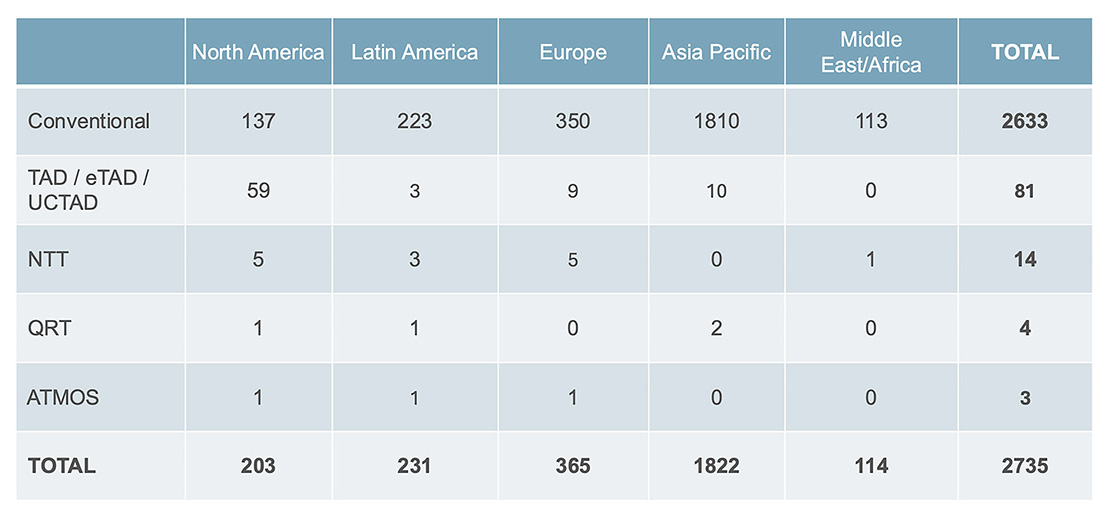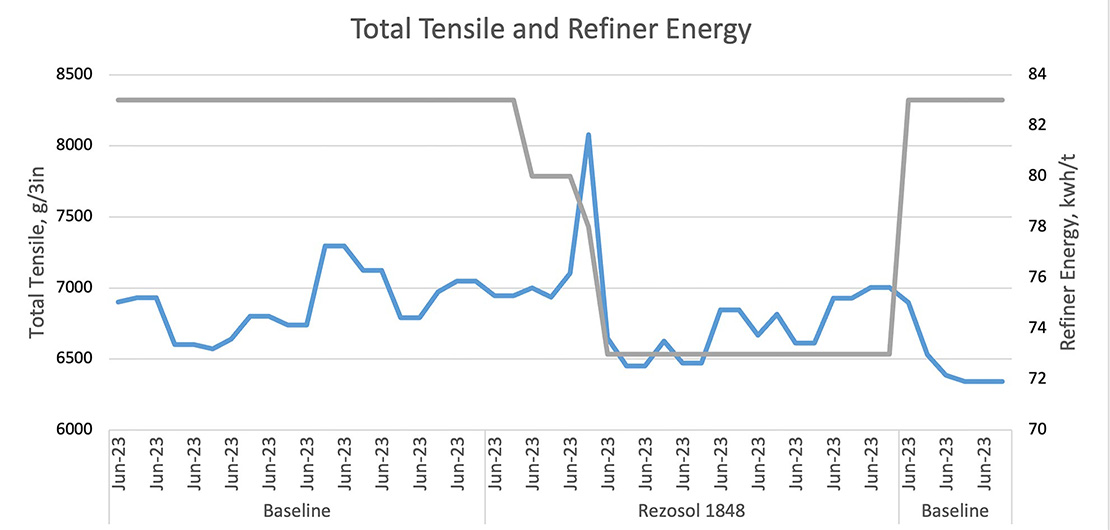Tissue and towel consumers, especially in North America, have high expectations for product softness and strength. The use of Through Air Dry (TAD) technology has allowed tissue manufacturers to meet these quality expectations and deliver premium and ultra-premium products with optimal bulk and absorbency. Globally, there are 68 TAD or e-TAD machines producing tissue products today: 51 in North America, eight in Asia Pacific, seven in Europe and two in Latin America (see table below). The search to make the drying process more efficient and sustainable while maintaining the desired sheet characteristics intensifies.

References: ResourceWise Mill Asset Database, Solenis Tissue Market Intelligence
Transformative TAD
Traditionally, tissue manufacturing involves a trade-off between strength and softness. Conventional methods rely on wet pressing to remove water and increase bonding. While effective in enhancing strength, this process impacts the absorbency and bulk of the tissue. Converting tissue products from single-ply jumbo rolls into multi-ply, embossed individual rolls also has an impact. While it’s a necessary step to prepare rolls for sale on retailers’ shelves or for purchase via e-commerce, converting often sacrifices sheet strength to gain softness and bulk. Recognizing these limitations, the tissue industry sought innovations that could deliver both strength and softness without compromise, leading to the use of TAD in tissue making.
The TAD process begins with the formation of a wet paper web on a forming wire, similar to conventional wet or dry crepe methods. However, instead of proceeding directly to pressing, the wet web is transferred to a through-air drying section. Here, hot air is drawn through the web to pre-dry the paper fibers. This controlled drying process ensures that the fibers retain their natural structure, maintaining the softness and bulkiness of the tissue. The TAD process is typically followed by a conventional Yankee dryer to crepe the sheet.
Products manufactured with the TAD process exhibit superior strength, allowing them to withstand rigorous use without tearing or disintegrating. At the same time, they offer a luxurious softness that enhances user comfort, making them ideal products for consumers with a desire for soft and strong towel, facial and bath tissue.
Balancing Structure and Sustainability
With quality and performance at the heart of differentiated premium tissue goods, manufacturers will focus on their operational performance to ensure consistency of sheet structure over the life of the TAD fabric. For textured fabrics, tissue makers examine the pocket structure over time. This micro-level detail has a major impact on how consumers perceive the performance of their paper towel or bath tissue.
The use of a release agent on the TAD fabric plays a crucial role in helping tissue producers maintain the sheet structure throughout the drying process. Papermakers have traditionally used mineral or hydrocarbon-based oils to aid in the release of the sheet as it separates from the fabric. However, oil-based products can cause a haze to develop in the machine room, raising worker safety concerns and potentially exceeding product exposure limits.
Concerns also relate to how the TAD fabric release agent is applied. High-pressure needle showers are used to keep fabrics clean and consistently impart the desired tissue sheet structure. When traditional oil-based release agents are used, they are picked up by the shower water and become part of the mill water discharge, contributing up to 85% of the oils contained in wastewater streams.
A Revolutionary Release Agent
Solenis developed a patented mineral oil-free microemulsion technology to replace traditional oil-based products. Rezosol™ 1848 offers the user a safer GHS profile, with no hazards or product exposure limits, and has a higher product flash point than traditional lubricants.
The product profile results in the elimination of the blue haze tissue operators experience when the TAD process includes the use of traditional oil-based products. Beyond enhanced worker safety, the use of Rezosol 1848 can have a positive impact on the environment by reducing the release of fats, oils and greases (FOG) into the effluent discharge by up to 90% when compared with conventional technology.
Due to its unique and proprietary release characteristics, Rezosol 1848 delivers a consistent gain in tensile strength. A North American tissue producer chose the innovative agent to replace a traditional oil-based release product, resulting in a repeatable and reproducible 15% gain in tensile strength. With this consistent gain in strength, the customer had the leverage to either:
- Increase the level of broke in the core layer by up to 5%, saving on virgin fiber costs.
OR
- Reduce refining by 10% and increase machine speed. This resulted in a $6 per ton savings in natural gas consumption.

The Only Mineral Oil-free Technology in the Market
TAD tissue makers are seeking innovative ways to achieve consistent performance while enhancing operational efficiencies and improving worker safety and manufacturing flexibility. Rezosol 1848 is the only mineral oil-free technology in the market to offer a major reduction in FOG in the wastewater effluent, with measurable gains in operational performance. This innovative solution can improve your key performance indicators, maximize efficiency and reduce manufacturing costs.